Fluid Solutions
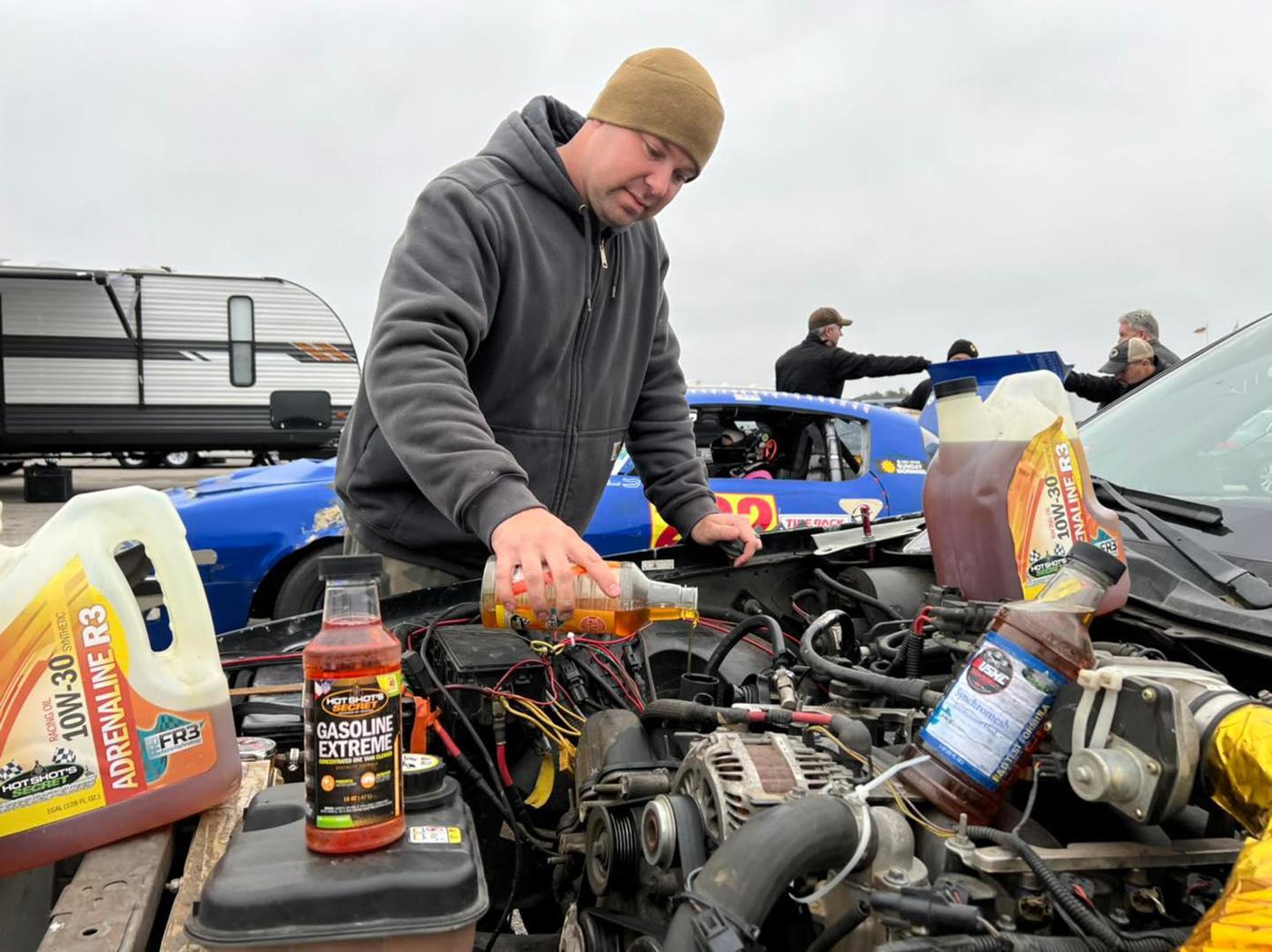
Racers want more power and better protection from their lubricants. Here’s how the racing oil companies are responding.
How often should oil be changed? Should it be mineral-based oil, full synthetic, or a blend? How thin or thick should that oil be? These questions sound like they come from the FAQ section of your local quick-oil-change station’s website, but racers share many of these same concerns when seeking the best lubrication for their engines. Granted, the worlds they occupy are very different: Racers may be looking for protection from the pressure generated by forced induction, or to squeeze a few more horsepower from an otherwise sealed powerplant, while fuel economy is the name of the game in the transportation sector. But the constant evolution of engine technology, whether that’s for the drag strip or the interstate, is forcing race oil formulators as well as commodity oil manufacturers to re-examine oil’s basic building blocks to find new lubrication solutions.
Latest Lubricants
The French oil company ELF traces its motorsports involvement back to the late 1960s. Now a brand under the TotalEnergies umbrella, it has re-entered the US market and is offering racing fuels and two lines of lubricants, HTX and HTX Classic. These oils “cover the gamut,” said Michael Beam from ELF’s US headquarters in Linden, New Jersey. “Circle track, dirt track, IMSA, endurance racing, drifting, pretty much everything except for drag racing.” The HTX Classic oils contain higher levels of zinc for classic road cars and vintage race cars.
ELF’s HTX oils are formulated with an ester base and a mix of polyalphaolefin (PAO) oils, Beam said, “which allows us to handle higher temperatures, higher shear, and help reduce friction.” HTX oils “really exceed on the turbocharge side of things, where the high exhaust temperatures can cause coking on those small bearings inside the turbocharger.” To explain the difference between HTX’s base oils and more conventional synthetic base oils, Beam pulled out a cooking analogy, likening ester/PAO oil to olive oil, “while synthetics are more like butter. When you cook both of those, olive oil can handle the temperature a lot longer before it starts smoking, and when it does burn off, it doesn’t leave any deposits. But if you cook butter, it burns pretty quickly in a frying pan.”
Ester technology isn’t new, Beam acknowledged, “but it’s really coming around. It definitely costs more—esters would be cost-prohibitive in your daily driver—but it’s great to use if you want the best protection.”
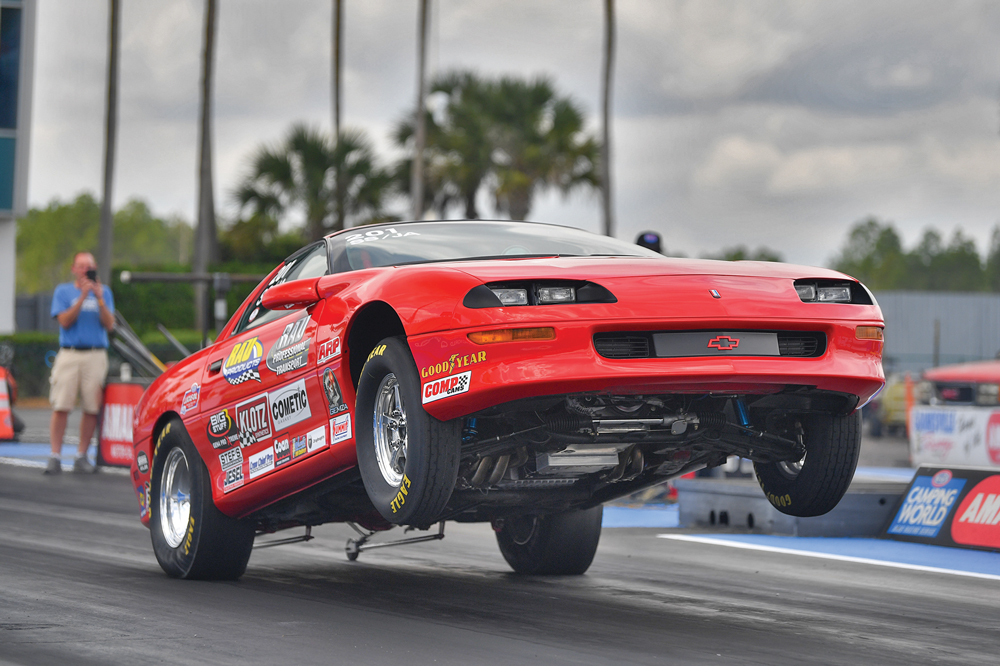
Klotz Synthetic Lubricants of Fort Wayne, Indiana, has recently introduced two new products, a drag race oil and a motorcycle oil with applications in the circle track world.
Klotz’s new KE-916 Pure Estorlin Racing oil “is one of our first drag-racing-specific oils,” said Chris Mileti. With a multigrade viscosity of 0W-16, it is “the lowest viscosity grade racing oil that Klotz has introduced in recent years.” It was formulated in response to a trend Klotz recognized in Stock and Super Stock drag racing classes. Two trends, actually.
These racers are “going to lower viscosity grades in an effort to reduce frictional losses in the engine and generate more horsepower,” Mileti said. “They’re also going to extraordinary lengths to keep their engines cold, during warm up, during the burnout, and during the race, because cold engines produce more power. We had to change the formulation for that, because most racing oils are designed to protect the engine from high temperatures.”
Mileti called it a “balancing act, because you want to reduce the frictional losses, but you still have to protect the engine. Even though it’s running for only a few seconds, it’s under a tremendous amount of stress.” The new oil was formulated “so that its friction-modifying and anti-wear chemistry activate at low temperatures.” Just how low? “These drag racers see maximum oil temperatures around 145 degrees Fahrenheit,” Mileti said. “To put that into perspective, Klotz participates in other forms of racing where oil temperatures can approach 330 degrees F.”
Klotz tested the new oil with select customer race teams last year, from dyno sessions to racing at the NHRA US Nationals. “When we reviewed all the data and looked at some of the teardown engines, we were really happy with the performance,” Mileti said. As an added benefit, “in dyno testing, we were able to improve horsepower. Across the entire rpm range over our benchmark oils, we were getting about 4 hp. That’s a pretty big deal for a Super Stock team.”
Klotz’s other new oil, KL-840R Motorcycle Techniplate, is a 10W-40 variant of a 15W-60 racing oil designed for motorcycles with wet clutches, “where the engine oil touches both the engine and the clutch,” Mileti said. “It’s very hard to find performance gains in those types of engines because you have to watch what type of chemistry you put in there. It can negatively impact clutch performance.” KL-840R is formulated to “handle extremely high temperatures, and it’s optimized for clutch feel and performance.” Klotz developed the oil with feedback from flat-track motorcycle racers.
During the oil’s development, Klotz discovered that it “excels” in motorcycle-engine-powered Legend cars, Mileti added. “The issue with those Legend cars, especially the air-cooled ones, is as the oil heats up, they lose some ring sealing, which causes a loss of power. But with the KL-840R, you get very good lap-to-lap consistency. In fact, in some of the testing we did down in Georgia late last summer, one of the fastest laps we had was the last lap of the race.”
Schaeffer’s Specialized Lubricants of St. Louis, Missouri, introduced two racing oils at the 2023 PRI Show. Its Micron Moly SAE 70 and Micron Moly 10W-30 were specifically formulated for drag race engines using alcohol- and methanol-based fuels.
“We’ve always had success on dirt and asphalt tracks, and some of those racers would also participate in drag racing, so interest started to grow,” explained Larry Ludwig. “Normally, our semi-synthetics would work with the alcohol in circle track racing because the temperatures got up to the point where it boiled off the alcohol. But in drag racing, you have more of a tendency for that alcohol to get into the oil and to not be burnt or vaporized off. With a synthetic or partial synthetic oil, that alcohol will basically separate. When it goes to the next race, you may get a slug of alcohol instead of the oil getting into the engine and trying to lubricate it, which can cause a catastrophic failure.” However, these new oils, which are petroleum based, “will mix with the alcohol and keep it suspended.”
The 70-weight Micron Moly was formulated “for extremely high-horsepower drag race and tractor pulling engines, where traditionally a 70-weight is used mainly because of the amount of fuel dilution that happens in those particular applications,” Ludwig noted.
The 10W-30 is intended for aluminum-block engines with tighter tolerances. “At one time, we only had a 20W-50 viscosity grade, but we were getting feedback that 20W-50 was, in some engines, a little bit too heavy of a viscosity,” Ludwig continued. “Engine builders still wanted the protection of a little bit heavier viscosity oil, but not a 20W-50. We came up with the 15W-40 Supreme racing oil, and that worked excellently, but we kept getting feedback about how the tolerances were becoming so much tighter in the crate engines being used. So we developed that 10W-30.”
TriboDyn Lubricants of Mooresville, North Carolina, has made a couple of improvements to its formulations in recent years. “Our goal was to improve two things,” explained Mark Wheatley. “One was to bring our coefficient of friction 30% lower than anybody else. The other was to improve our film strength so overall it would be the best product out there with the highest film strength.”
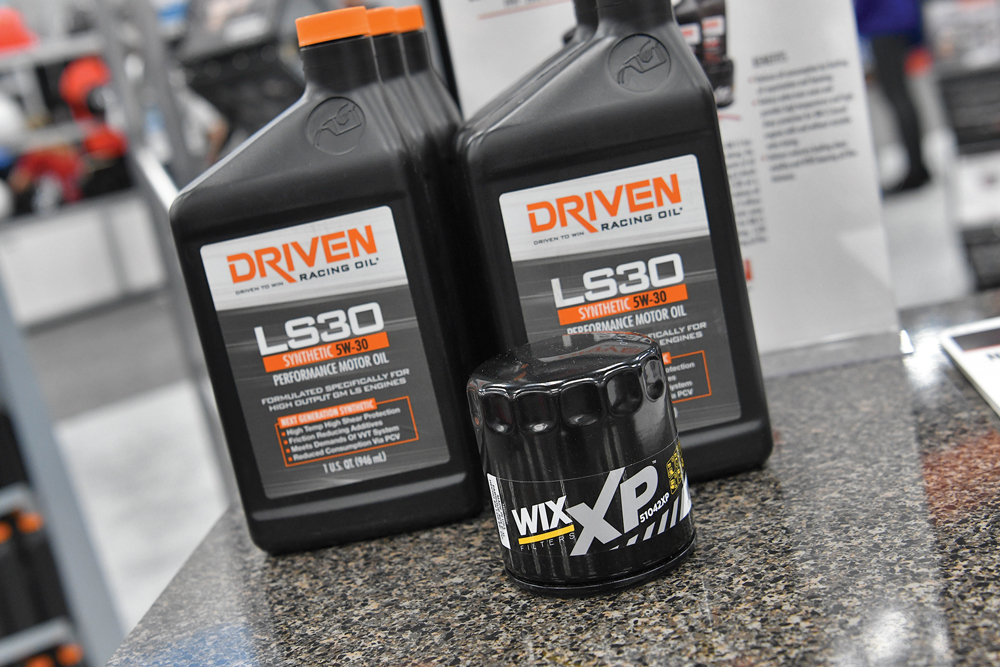
TriboDyn’s film strength technology is formulated into its TRI-EX oil, “while our TRI-EX2 has our highest film strength, our ceramic lubrication, and a coefficient of friction technology that is second to none on the market.”
Not long after the formulations were complete and on the market as a running change, two of TriboDyn’s oils were bought on the Internet along with 38 other oils to be used in a test of “the tribological characteristics of next-generation lubricants” by the Metropolia University of Applied Sciences in Helsinki, Finland. None of the companies whose oils were used in the study were told that their oils were being evaluated, Wheatley said, and only found out after the results were released and posted. The test results showed that TriboDyn Lubricants’ oils were number-one in every category, including film strength, and they achieved the highest horsepower numbers in dyno testing because of their reduced coefficient of friction. “That test proved we were on the right track with the goals we set,” Wheatley said.
TriboDyn has also reduced its retail prices on all TriboDyn Lubricants products by 15%.
Not all the latest product releases are engine oils. Lubrication Specialties of Mt. Gilead, Ohio, parent company of Hot Shot’s Secret, has introduced Adrenaline Assembly Lubricant. “It has a lot of tackiness, so it clings on the parts,” explained Josh Steinmetz. “It also has a lot of rust and corrosion inhibitors in it, and a whole lot of zinc”—more than 2,000 ppm—“to help with that initial startup until we get oil flowing to the rest of the components.
“We wanted to offer something better than other assembly lubricants on the market and also offer a complete solution, from assembly all the way through our racing oils,” Steinmetz added. “Next on our radar is a break-in oil.”
Driven Racing Oil of Memphis, Tennessee, is also working on a new type of break-in oil, said Bill Alexander. We spoke with him while he was on the road, having just completed some dyno testing at a race engine shop. “I’m maybe 50% of where I’m going on those,” he said, “but I know what we found this week is going to lead to a new and enhanced break-in oil.”
One Oil for Both Drag and Drive?
Driven has entered into a partnership with Sick the Magazine, the publication that supports Sick Week and other drag-and-drive events. “We’re seeing a big boost in popularity in these events,” Alexander said, “and we’re trying to figure out what works for drag-and-drive, because in our mind, drag racing and street driving are two different applications. But in these events, you’re doing both. So we may be adjusting a formulation, or recommending they use what we already have but in a different way.”
Alexander believes these racers “may need to run higher viscosity oils than they would typically run because of the heat in the drive.” For the same reason, synthetic oil may be a better choice for these racers, even though “in our opinion, synthetic wouldn’t be the best choice for the drag racer. We typically don’t recommend it because, for one thing, they don’t run the oil long enough to really get the benefits of a synthetic, especially the higher oxidation stability. You never get the oil hot enough to take advantage of it. And mineral oils, like our GP-1, which is Pennsylvania-grade crude, give a better ring seal, which can result in better compression and more power.” But Alexander has already been testing synthetic oil with drag-and-drive competitors, believing it will stand up better to the heat generated by hundreds of miles of street driving between drag strips.
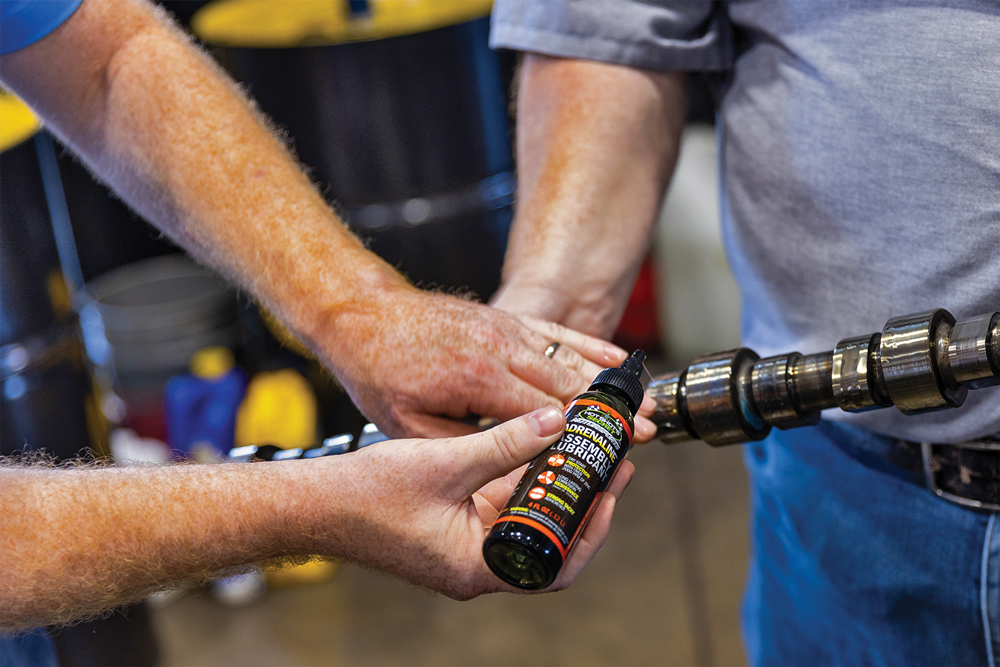
What about the possibility of using synthetic oil for the drive portion of the event and then replacing it with mineral-based oil for racing? “What I’ve found is that a lot of them will only do one oil change through the week,” Alexander said. The Driven van that goes to these events carries 50 cases of oil for the racers, but it wasn’t selling much “until about day four, which was right in the middle of the event. They do not want to change the oil every day, so we’re looking to get optimal performance out of one product for both applications.”
Viscosity Trends
Tighter production tolerances and the drive to improve fuel economy have created a need in the general transportation sector for thinner and thinner oils, some down to single digits. However, does that trend hold true in racing?
“A lot of times to get more horsepower you want to go to a thinner viscosity,” Beam acknowledged. “But the problem with, for example, a forced-induction engine is you tend to get a little blow-by, so fuel dilution becomes a problem. Managing the right viscosity to handle fuel dilution, and maintain protection, is very important. To me, it’s important to match your oil weight to what you’re doing and what you need.”
“I would say there’s a trend to go to lower viscosity grades because you’re reducing frictional losses in the engine,” Mileti said. “These teams are going to want to use the lowest viscosity grade that they can that still provides adequate protection for the engine. In some circle track racing we’re seeing viscosities as low as 0W-30.”
Mileti went on to say that in some applications, NHRA Top Fuel, for example, “those engines produce so much horsepower, they’re not going to gain any appreciable performance improvement by lowering the viscosity. They’re more concerned with just keeping the engines together. The diesel tractor pullers might be in the same camp. They wouldn’t benefit from a couple fractions of a percent horsepower improvement. But the Stock and Super Stock guys would.”
Steinmetz noted that in the diesel racing segment, “tolerances are getting a little tighter in some of the engines, so we’re making weight adjustments on their oil viscosity based on what they’re setting up. We’re working with them to find out what new issues they’re having. We’re still primarily 50- and 60-weight oils, but we do have some guys going down to 40-weights with increased tolerances.”
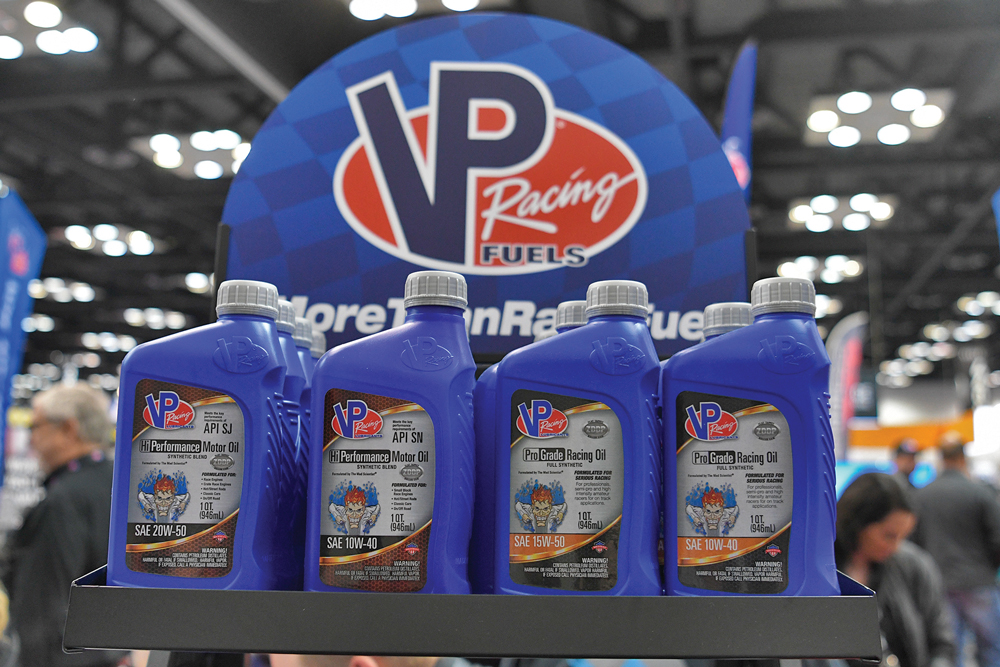
“There’s a lot of old-school thinking about viscosity,” Alexander said. “Guys will say, ‘I’m gonna run the thickest oil I can because that gives me the most protection.’ What we find is, viscosity is really dependent on engine oil bearing clearance and other things. An oil that’s too heavy may be hotter than a thinner oil, because if the engine’s not set up for it, there’s more resistance in the fluid, which creates heat. And maybe that oil’s not getting to your lifters, so the hydraulic lifters aren’t working as efficiently as they should.”
“If you lower the viscosity, you do get rid of drag,” Wheatley said. “But you may be creating wear issues, because the thinner the oil, the worse the film strength is.” TriboDyn’s film strength improvements were made to address just these kinds of circumstances, he said, with the added benefit of gaining horsepower due to the lower coefficient of friction. He cited tests done with TriboDyn oil in a 602 crate motor where “all they did was drain their 20W-50 oil and add our TriboDyn 20W-50 oil. On the dyno they picked up 4 hp, and they also reduced their operating temperature 20 degrees. If I ask engine builders, ‘How much would you pay for 1 or 2 hp?’ I get answers from $1,000 to $2,000 or even $5,000. When I tell them they can do it just by changing their oil to TriboDyn oil, they look at me like I have five heads.”
Renewable Future?
We received very mixed responses when we asked if these companies were planning to incorporate renewable oil ingredients into their racing oils. Ludwig said there’s been “no demand whatsoever” for a product like that at Schaeffer’s. “You’ll see it more in commercial use and by companies that have government contracts because the federal government and some state governments mandate the use of a renewable type of base oil.”
Likewise Beam said that while ELF did formulate renewable race fuel, there were no plans for renewables on the lubricant side. “Renewable oils, which are re-refined base oils, are fine for a daily driver. But they aren’t really capable of giving you the protection of an ester or a PAO that you would want in a race engine.”
Mileti said that the use of renewable lubricants in motorsports “is a ways away from large-scale adoption.” Klotz does have two products in that space, though they don’t use re-refined base oils. “We’re one of the last companies to use castor-based lubricants,” he explained, referring to oil derived from the castor bean. Both products, BeNOL Racing Oil (100% castor oil) and Super Techniplate Synthetic Lubricant (a castor/synthetic blend) are for two-stroke motorcycle engines, “and they work pretty well if you have a two-stroke racing engine that runs very hot and at high rpm.” Some automotive race teams, he added, will put a small amount of BeNOL into alcohol, methanol, and even nitromethane “to add a little lubricity to the fuel.”
Steinmetz said Lubrication Specialties is “continuing to experiment” with renewable lubricants. “We continue to look at that as an opportunity to see what’s happening there and make sure that we’re ahead of the curve if anything changes in that market.”
Driven has a “100% renewable motor oil,” Alexander said. “It’s called an estolide, and it’s a true synthetic. I’ve been working on it for a couple of years, and I’m seeing pretty good results out of it. It works as well as a lot of mainstream synthetic motor oils, but the cost is much higher, so the market doesn’t seem to be there. But we’re going to keep working on it, and staying on top of it, kind of jogging alongside the market with it.”
SOURCES
Driven Racing Oil
drivenracingoil.com
ELF
elf.com
Klotz Synthetic Lubricants
klotzlube.com
Lubrication Specialties/Hot Shot’s Secret
hotshotsecret.com
Schaeffer’s Specialized Lubricants
schaefferoil.com
TotalEnergies
totalenergies.com
TriboDyn Lubricants
tribodyn.com
 MEMBERSHIP LOGIN
MEMBERSHIP LOGIN JOIN PRI
JOIN PRI


